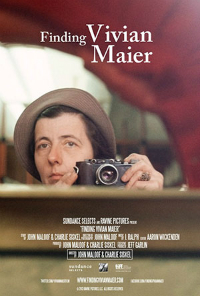Photo Bomb: Maloof and Siskel Rewrite Modern Art History
 Tales of buried treasure have long been the stuff of cinema gold, from The Treasure of the Sierra Madre through The Goonies and beyond, but John Maloof and Charlie Siskel’s debut collaboration has much more in common with Jessica Yu’s In The Realms of the Unreal than it does with pirates and jewels. Finding Vivian Maier unearth’s the secret street photo cache of the titular neurotic nanny, posthumously hailing her as a master who’s been missing from the history books solely because of her own reticent will. After falling upon her unseen stockpile at auction after her death in 2009 and surveying a small selection of the thousands of images she composed, Maloof began to wonder, who was this woman? What motivated her to take so many photos, seemingly never showing them to a soul? Would the world care about these photos if they were made known?
Tales of buried treasure have long been the stuff of cinema gold, from The Treasure of the Sierra Madre through The Goonies and beyond, but John Maloof and Charlie Siskel’s debut collaboration has much more in common with Jessica Yu’s In The Realms of the Unreal than it does with pirates and jewels. Finding Vivian Maier unearth’s the secret street photo cache of the titular neurotic nanny, posthumously hailing her as a master who’s been missing from the history books solely because of her own reticent will. After falling upon her unseen stockpile at auction after her death in 2009 and surveying a small selection of the thousands of images she composed, Maloof began to wonder, who was this woman? What motivated her to take so many photos, seemingly never showing them to a soul? Would the world care about these photos if they were made known?
The answer to this last question is the simplest. After posting a small selection of photos on his blog, the internet exploded with a resounding Yes. Her squarely framed Rolleiflex images of Chicago’s streets during the 50s and 60s exude a beautiful playfulness and feel for human tragedy in equal parts. People were wowed, and you will be too, as the film features dozens of her most notable works, as well as audio recordings and 16mm films she made and stored away, never to be seen until now. And yet, while galleries and news outlets around the globe have since featured Maier’s work, the illustrious institutional world, headed by the MOMA and the Tate Modern, have yet to recognize Vivian’s photos because of the lack of original prints made in her lifetime. You see, the large majority of her work exists only as negatives, long boxed and stacked along with her horded newspaper clippings and collected trinkets, and the process of printing these negatives is thought to be an artistic interpretation of her work, rather than a preservative representation.
Maloof’s ambition is to see Vivian’s work regarded among the greats, but first he must find out who she is. The film begins as video diary, Maloof filming himself unpacking his collection of Maier’s belongings, visually categorizing the boxes of amassed photos, receipts, letters, hats, clippings, et al – knowing somewhere within are clues to this mystery woman’s life. His investigation leads him to interviewing a string of Vivian’s previous employers, the now grown children she lived with and cared for and a few others who had casually made her acquaintance throughout the years. The talking heads remember her as a lanky eccentric hoarder with a massive stride and an inexplicable French accent, each recalling a different take on her given name. Though they all remember the camera forever draped around her neck, they’re all astounded to discover her talent behind the lens.
A visit to a genealogist and a few letters written in French see the mystery thicken to a rewarding international investigation, but as the plot leads away from Vivian’s photography and into the darker recesses of her personality, the excitement of Maloof’s discovery begins to wane. Though purposeful in questioning if Maier’s devotion to art outweighed her responsibilities as a nanny, the last quarter of the film suffers from a slowdown in pacing and a lack of pertinent subjects to inquire about her final few decades.
Though the biographical background is of utmost necessity to personally contextualizing the 100,000 photographs Vivian shot, the spirit of the film lives in the brief moments we spend with photographers Joel Meyerowitz and Mary Ellen Mark, who elegantly put into words exactly what makes Maier’s work so magnificently moving and historically paramount. Finding Vivian Maier flourishes when it finds its focus on the photos themselves, whether commenting on them directly or using them as visual punctuation to commentary in the fore. The elegance of their simple storytelling is hard to beat. Maloof and Siskel have crafted a rapturously inspiring film of revelatory discovery with the intent to validate the life’s work of someone who may not ever wanted the attention she’s being garnered with today. Vivian Maier may be rolling in her grave, but it’d have been a great tragedy if her work went with her.


